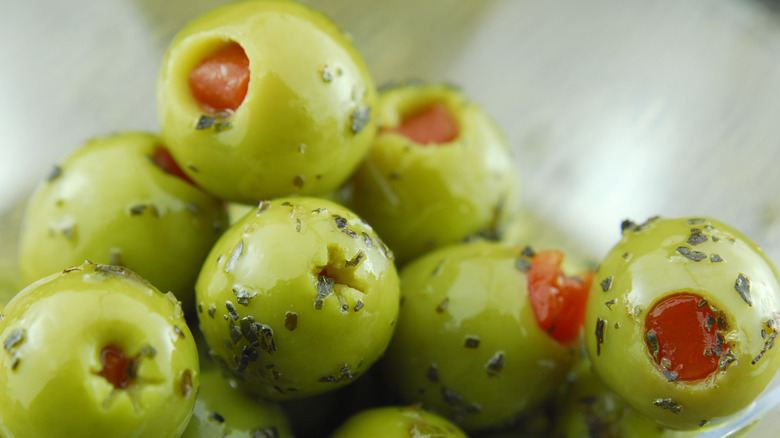What Sets Italian Mortadella And American Olive Loaf Apart?
The idea of stuffing meat into an edible casing is not a foreign concept to many parts of the world. As you probably guessed, this practice is called sausage making, and it has been part of civilization for about 4,000 years.
Like many foods, the sausage was birthed out of necessity; it was an excellent way to preserve food in times before refrigeration, and it was an ideal way to avoid wasting any part of an animal that was slaughtered for food. Historical documents mention sausage (or the general description of it) in ancient Mesopotamia, ancient Babylon, 9th century Greece, and 7th century China.
At its most basic, a sausage consists of ground meat combined with salt and spices (and sometimes other fillers like grains) that are forced into a natural casing. It can be smoked, dry-cured, fresh, or cooked. Most people recognize that this description applies to things like bratwursts, salamis, breakfast sausages, and even hot dogs. But it may come as a surprise that some deli meats like olive loaf and mortadella also qualify as sausages.
These, too, are made from a finely ground combination of ingredients that are encased and fully cooked. They are typically thinly sliced before being sold to create lunch sandwiches and charcuterie boards. Side by side, both olive loaf and mortadella appear to be similar, with a rosy hue and flecks of color, but considering the differences between the two, they're more like cousins and less like twins.
What is mortadella?
Authentic Italian mortadella is one of many Italian culinary treasures. Mortadella, originating in Bologna, is a cured and cooked sausage made from pork that is so finely ground that it almost appears as a paste before it is put in its casing. In this sense, it is reminiscent of bologna; however, mortadella must have small cubes of rich pork fat incorporated into it, and it is typically spiced with black pepper, myrtle berries, and, very often, pistachio nuts.
Once it is sliced, each piece should contain dots of white fat and green nuts throughout. Mortadella should taste rich with smooth chunks of fat running through it and have a subtly sweet flavor accented with spice.
Mortadella made in Bologna, Italy, will be labeled as "Mortadella Bologna" while others are simply called "mortadella." Bolognese producers will sometimes add different spices and flavors to their sausages. All mortadella is excellent eaten on its own or used in deli sandwiches, the most famous of which is Muffuletta, a New Orleans staple that also includes lots of pickled and preserved vegetables, plenty of additional Italian cured meats, and cheese.
What is olive loaf?
If you grew up in America, you probably remember spotting olive loaf during your grocery shopping trips with your parents, although you may not have known what it was. You might have spotted it in the deli section interspersed with packages of sliced ham and bologna, but upon looking at the terrifying green and red dots all over it, you may have dearly hoped that mom wasn't about to put it in her shopping cart.
Not that you're older and wiser, you deserve to know that olive loaf is basically like bologna with pimento-stuffed green olives. Unlike mortadella, which is always made with pork, olive loaf can be made of a mixture of meats, like pork and beef, and sometimes chicken and pork. Just like mortadella, once the meat is finely ground, the additional ingredients are added (in this case, whole olives), and the sausage is cooked.
Mortadella is usually round in shape, but olive loaf, true to its name, is often molded into a square or rectangular loaf shape, but some large-scale producers will offer it in round slices. In the US, it is most often used as lunch meat, adding a salty, briny bite to otherwise plain bologna sandwiches, but it can also add a colorful and unexpected element to a meat and cheese platter. While mortadella has the romance of Italy attached to it, olive loaf also deserves to be noticed. The two may be different but are definitely quite similar.


